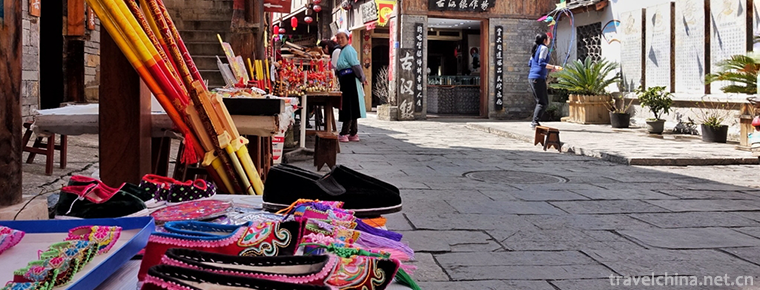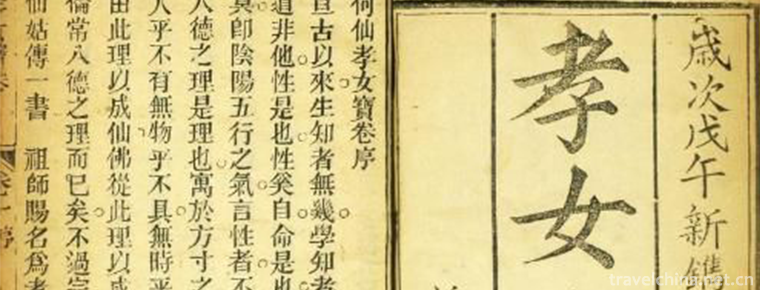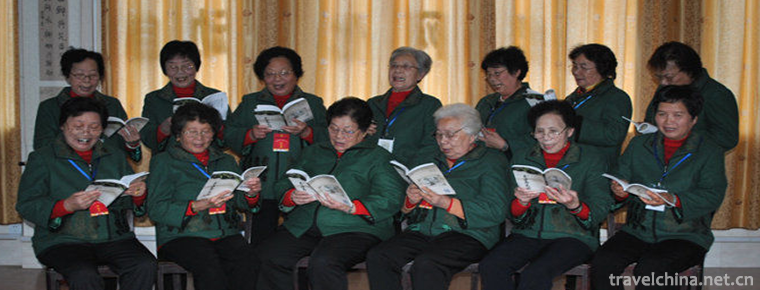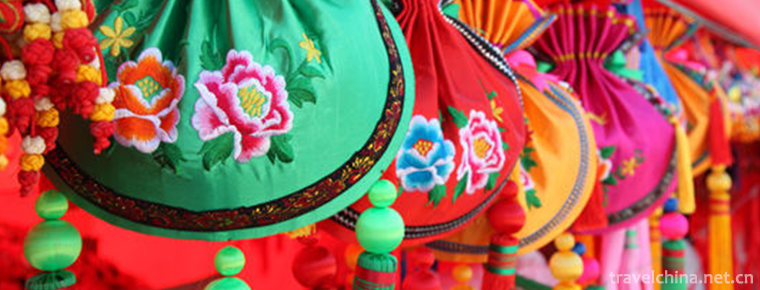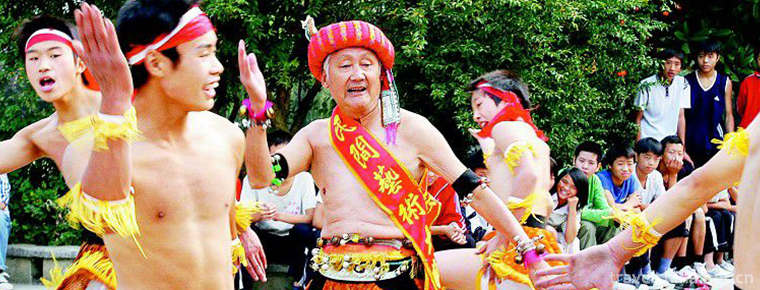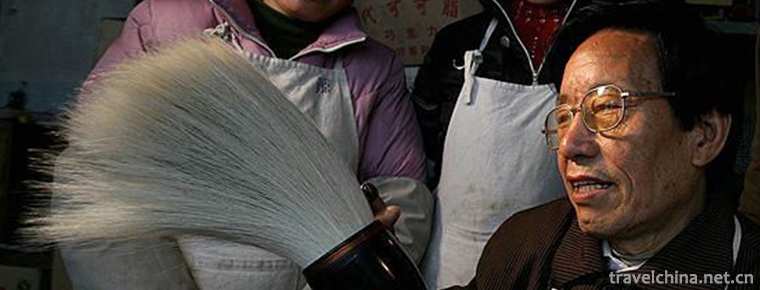Ordos Wedding
Ordos Wedding
Ordos Wedding, one of the national intangible cultural heritages, is a traditional folk custom in Ordos City, Inner Mongolia Autonomous Region.
Ordos wedding originated in ancient Mongolia and formed in the Mongolian and Yuan Dynasties. In the 15th century, with the Mongolian Ordos Ministry entering the Ordos region, the "Eight White Chambers" sacrificed to Genghis Khan were enshrined on Gandel Obo in Ordos, and the Ordos wedding ceremony of the Mongolian people spread among the Ordos folk with its unique ritual procedure.
On May 20, 2006, the Ordos Wedding was approved by the State Council and listed in the first batch of national intangible cultural heritage list, heritage number X-55.
historical origin
Ordos wedding, which originated from the ancient Mongolian period, was formed in the Mongolian and Yuan Dynasties. The secret history of Mongolia records the original evidence of the Mongolian wedding. Genghis Khan's thirteenth generation ancestor, the son of Kim Tao Rigur Kim Bayan, Tu Wo Morgan, once held a banquet to marry Alatan Gowa, the daughter of Haolilar Dian Ergen. According to this record, Mongolian ancestors created a national wedding civilization more than a thousand years ago.
In the late 1970s, the Ordos Wedding Notes were put on the stage, making them move from grasslands to cities and from China to the world. It has become a magnificent folk spectacle to show the national customs and charm.
Cultural characteristics
The wedding ceremony of the Ordos wedding takes the wedding of the man as the main thread. It concentrates the essence of the Mongolian wedding process, and puts it in song and dance. The scene is lively, cheerful, witty and joyful, with healthy content and elegant character, highlighting the national character of the Mongolian people who are rugged, vigorous, courteous, and courteous.
Ordos wedding music has distinct Ducheng characteristics. The content, theme, rhythm, melody, rhythm and singing style of the wedding banquet song all show its unique morphological characteristics. This kind of wedding ceremony music needs to be performed through the context, that is, the wedding occasion can fully show its own functions and functions, it has an impact on every link of the wedding. For example, there is a special relationship between the individuals and groups participating in the wedding, such as communicating with each other, fulfilling the ceremonial tasks undertaken and cooperating with each other. The basic way or means of such communication is to sing and perform a complete wedding banquet song. This series of customs have been inherited and continued in music.
Although Ordos wedding music has distinct local characteristics, its singing custom, ritual function and cultural significance are in common with other Mongolian wedding music. Its common characteristics reflect the inheritance and variability of wedding music from another side.
Ritual flow
Some of the main ceremonies and rules of Ordos weddings have evolved from Mongolian weddings in the 12th century. Among them, the most characteristic contents are:
Hada's engagement: The man asks a matchmaker to get married to the woman and tries out the attitudes of the other party. If the woman intends, the matchmaker will lead the future bridegroom to her home again and present Hada as a gift; if the woman takes over Hada, the marriage will be settled. So people call it "putting down Hada and nailing down a nail".
Pei Gong Marriage: In ancient Mongolian grassland, the land is vast and the people are sparse, the mountains are high and the road is long, coupled with the existence of the marriage system, bringing many unexpected disturbances to the marriage, unavoidable dangers. Marriage teams wear bows and arrows in case of unexpected armed defense. Nowadays, the bridegroom officer at the wedding still wears bow and arrow, but it has long lost its original use, but it has become a symbol of masculine beauty and heroism.
Blocking the door to welcome her husband: When the marriage team came to the front of the woman's house, the elder sister-in-law and the bridesmaid first blocked the bridegroom and so on in front of the door, so as not to let in. At this time, only by the man who can speak well of the "Awakening Spirit" (blessing people) to come out, and the woman's sister-in-law to engage in a verbal battle, and then the groom can go home. This is the inevitable outcome of the ancient Mongolian system of marriage robbery and the system of forbidding marriage within tribes. The purpose of the game is to prove the groom. Contemporary, it has become the most exciting and interesting scene in Ordos wedding.
Sheep toast: This is a grand ceremony for men to present sheep's backs and toasts to women. Sheep's back, called "Xiushi" in Mongolian, is the whole sheep's feast. The sacrifice of sheep's back is the highest etiquette and the heaviest gift of the Mongolian people. The toast should start from the woman's main marriage and offer each guest 339 cups of wine in turn. The man sings the toast three times, and the bridegroom kneels down to worship the toast three times.
Question for Name: Mongolians are very particular about the name of the bride, not the same as the name of the parents-in-law. It also pays great attention to the relationship between the bride and the groom. Therefore, the ceremony was specially arranged in order to find out the girl's name and zodiac sign in case of renaming or aging. "Seeking Name and Asking Geng" is the most time-consuming and content part of Ordos wedding ceremony. The form of poems between the man's congratulations and the woman's Bridesmaid or the congratulator is in the form of poems. Because of this, it is full of philosophy, knowledge and literature from beginning to end, full of poetic and picturesque, attracting people to win.
Distribution of Marriage: This is a ceremony held at the woman's home. Because it will announce the end of a girl's girlhood and the beginning of a woman's life. Distribution and braiding ceremony, by the woman hired by the "blooming father and mother" to preside over. The "six parents" in Mongolian folk songs refer to the biological parents, father-in-law and "father-in-law". Therefore, the role of "widowed father and mother" is very important, and must be played by a complete father and wife. First, the bride's hair is separated from the middle of her head by the ivory chopsticks worn by her father or the silver arrow or antelope horn worn by her groom; then, the bride's long hair is combed repeatedly with pure spring water or holy milk, and then braided into twelve thin braids, wrapped around her head and cheek, and then dressed in a glorious head ornament and embroidered dragon cap, covered with blue. Or a red cap.
On the way to send one's relatives, "Song of sending one's relatives" is the most moving and charming song at the Ordos wedding.
On that beach,
The frost steed is ours.
Python satin and coral,
Beautiful girls are everybody's.
Mercedes-Benz on that beach,
The silver-spotted steed is ours.
Silver and coral,
Beautiful girls are people's...
In the moving song, the happy bride farewell to her relatives, to her hometown, to the distant place, to her mother-in-law's home.
Another interesting game on the way to see off relatives is "grabbing a hat". In the process of marriage, the groom will be tested by many kinds of women. One of them is to grab a hat. A young man will suddenly snatch the hat of the groom's official with a whip to test the groom's temper, morality and adaptability when sending his relatives and his wife to race horses with each other. The game of "snatching a hat" is also deduced from the custom of "snatching a sheep" in ancient wedding letters.
Baptism of Holy Fire: Mongolian people are nomadic people, and fire has always been regarded as a holy god. Herdsmen believe that fire can avoid evil and eliminate disaster. So after the bride marries her mother-in-law, she must first accept the sacred fire baptism. The bridegroom took the bride's hand with a whip and passed through the sacred fire before entering her mother-in-law's door. After entering the mother-in-law's house, the ceremony of sacrificing the kitchen stove will be held.
Kneeling: When the bride comes to her mother-in-law's house, kneeling and "recognizing the size" are also important procedures. With the help of the bridesmaid, the bride salutes her parents-in-law three times and nine times. After recognizing the size, the groom lifts the mysterious veil for the bride, and the mother-in-law gives the silver teaspoon symbolizing family power to her daughter-in-law. From then on, the bride became the new master of her mother-in-law's family and began a new life on the road of life.
Inheritance and protection
Inheritance value
The Ordos wedding has condensed the essence of Mongolia's Ethnic Etiquette and custom, and has become the most complete and richest picture of Mongolia's ethnic customs. Ordos Wedding Collection of Ordos Mongolian traditional advocating culture, sacrificial culture, court culture, diet culture, costume culture, etiquette and customs, national songs and dances, throughout with happiness, auspiciousness, festivity, warm emotions, demonstrates the national charm, expresses people's desire to pursue a happy life, with rich and profound cultural connotations.
Inheriting characters
Cao Namu, male, representative successor of the fifth batch of state-level intangible cultural heritage projects, the city of Ordos, Inner Mongolia Autonomous Region, declared the project: Ordos wedding.
protective measures
In the 1970s, a group of artists, such as Yin Dabao of Ulan Muqi in Etok Banner, summed up the folk Ordos wedding ceremony. After artistic processing, the opera "Ordos Wedding" was put on the stage. After that, it was popularized in Etok Banner to protect the heritage of Ordos wedding.
In 2005, Qi Bilig cooperated with Mongolian writer Mo Hasbachan to plan and create 20 literary scripts of the national TV series "Ordos Wedding" (Mongolian version) to show the custom of Ordos Wedding to the world.
social influence
Important activities
On August 25, 2015, the third Ordos Wedding Cultural Tourism Festival opened in Ijinholuo Banner, relying on the rich historical and cultural heritage and beautiful human and natural landscape of the Supohan prairie, and through large-scale mass participation festivals, the Ordos Wedding Culture will continue to be inherited and promoted.
On January 16, 2014, the large-scale original dance poem "Ordos Wedding" was performed at the Kennedy Art Performance Center in Washington, USA.
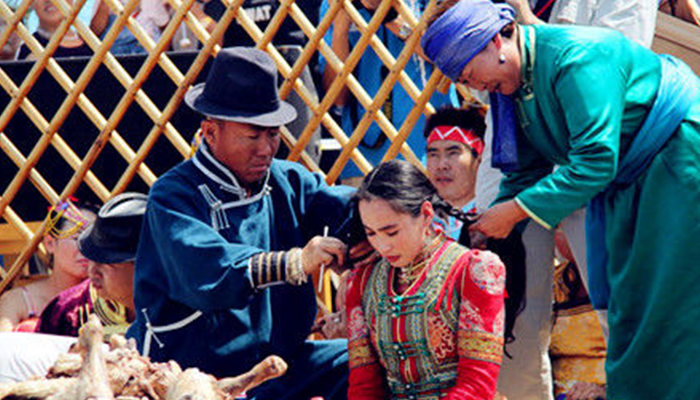
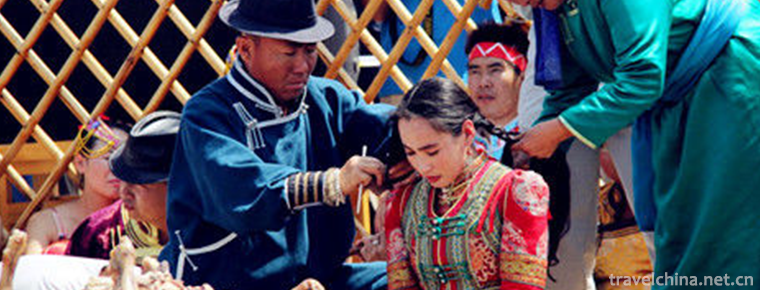
Ordos Wedding
-
Arctic Village Tourism Scenic Area
Arctic Village Tourist Scenic Spot: National AAAAA Class Tourist Spot, the most attractive scenic spot in 2014, and the northernmost scenic spot in China.
Views: 270 Time 2018-12-05 -
Tourist Area of Wu Taihu Lake in Suzhou
Wuzhong Taihu Lake Tourist Area in Suzhou is located in the southwest corner of the paradise of Taihu Lake, covering an area of 21.5 square kilometers.
Views: 234 Time 2018-12-06 -
Guanlan Lake Leisure Tourist Area
Shenzhen Guanlanhu Leisure Tourist Area, in May 2011, was awarded the National 5A Tourist Scenic Area, located in Shenzhen, Guangdong Province.
Views: 190 Time 2018-12-12 -
Kunyu Mountain National Forest Park
Kunyushan National Forest Park is located in Mouping District, Yantai City, Shandong Province. It covers an area of 48 square kilometers and belongs to warm temperate monsoon
Views: 315 Time 2019-01-29 -
Tianlong Tunpu
Tianlong Tunpu Town is located in Pingba District, Anshun City, western Guizhou Province. Deep in the mountains of karst landform, Tiantai Mountain and Longan Mountain are two mountains
Views: 201 Time 2019-02-21 -
Treasure roll
Baojuan is a traditional Chinese literary form of rap and singing, which evolved from the folklore in the temples of Tang Dynasty. Most of the authors are monks and nuns.
Views: 535 Time 2019-04-04 -
Song Album
"Dongshan Song Book" was introduced from Chaozhou, Guangdong Province, in the Ming Dynasty. Its tunes were constantly changing in the singing of folk singers and gradually assimilated
Views: 180 Time 2019-04-30 -
Qingyang Xiangbao embroidery
According to the pattern of paper-cut, various patterns are embroidered on the silk fabric with colorful thread, then different shapes are sewn, and the inner core is filled with silk, cotton and spic
Views: 155 Time 2019-06-11 -
Meat rustles
"Meat Lianliang" refers to the native minority local dance variety in Lichuan City, Hubei Province, which takes the unique body performance as the main form. It is popular in the city's Duti
Views: 245 Time 2019-06-11 -
Xuanbi Production Skills
Xuanbi has a long history. Originated in the Qin Dynasty, it flourished in the Tang and Song Dynasties. At the end of Song Dynasty and the beginning of Yuan Dynasty, there were frequent wars, and the
Views: 158 Time 2019-07-09 -
Ruoergai grassland
Ruoergai grassland is like a magnificent emerald inlaid on the border of Northwest Sichuan, known as "oasis of Northwest Sichuan Plateau", and is one of the three wetlands in China.
Views: 233 Time 2020-11-07 -
Plant resources in Yibin
Yibin City belongs to subtropical evergreen broad-leaved forest area, with rich plant species and diverse vegetation types. There are 435 species of arbor and shrub plants, 205 genera, 86 families, 59 species of bamboos, and 310 species of landscapi
Views: 316 Time 2020-12-18




